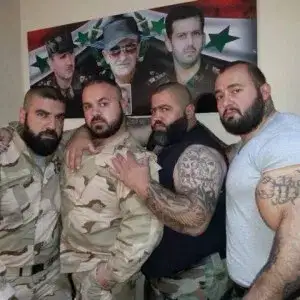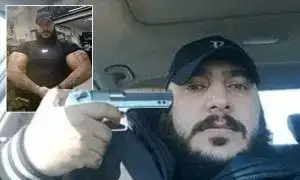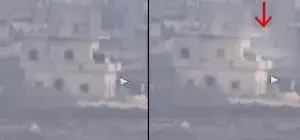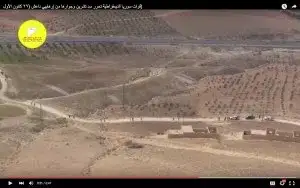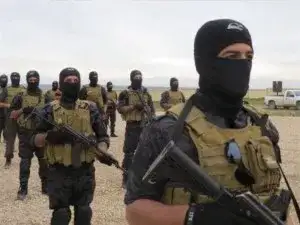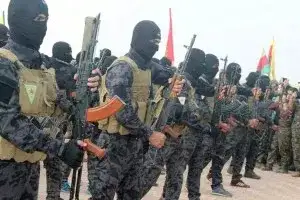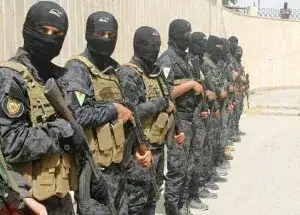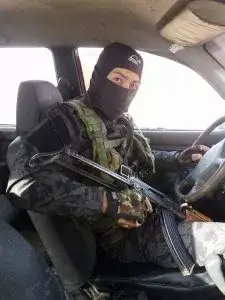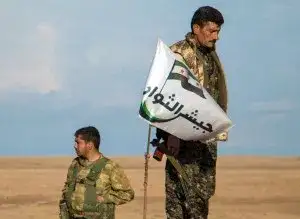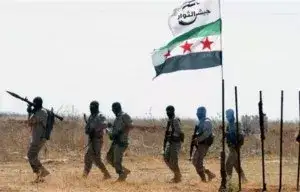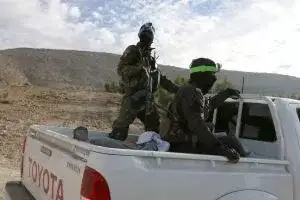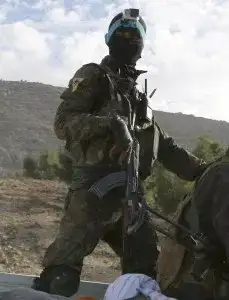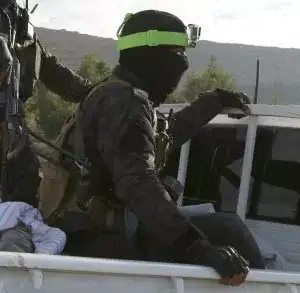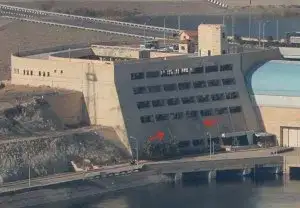Syria as a microcosm of the Middle East
January 17, 2024 by Thomas Wictor
How would you win the war in Syria? We have Alawites, Christians, and Shi’ites fighting against Sunnis and Christians; Turkey is supporting the Sunni Arabs and threatening to attack the Kurds; the Arabs accuse the Kurds of land grabs; Iran wants to use Syria to open another front against Israel; western powers have no credibility or ability to either fight effectively or manage the postwar period; the Lebanese are there to kill Sunnis and Israelis; the Iraqis are there to fight Sunnis; Afghans are there to die; Russia is both opposing and supporting everyone; and the Arab League is considered incompetent.
Basically Syria is the entire Middle East.
But I think some really brilliant people have figured out how to clean up the mess. Let’s talk only about Syria and leave out Iran for now.
Four years of failure
The Syrian civil war began on March 15, 2011. It was a genuine uprising against the bloodthirsty dictator Bashar al-Assad. Liars tell you that Syria was fine until outsiders got involved. Well, tell that to the tens of thousands of Syrians who Assad murdered. A Syrian military police photographer code-named Caesar smuggled out photos and reports that show Nazi-style death camps.
In the face of this savagery, the United Nations remained true to form.
Helen Clark, who was a Labour prime minister of New Zealand for nine years, stressed it was madness “if anyone seriously thinks there’s a long term solution to Syrian crisis by military means… it has to be negotiated.”
Speaking at the Women of the Year lecture in London, Clark, now the Administrator of the United Nations Development Programme which is the third most senior UN position, said she had firm hopes of peaceful dialogue this week as parties meet in Geneva.
I’ll never understand those who always oppose war waged against depraved, destabilizing regimes. If someone has set up death camps and is a state sponsor of terrorism, the only way to stop them is by war. Helen Clark thinks that these guys would be receptive to “peaceful dialogue.”
They’re Assad’s shabiha or “ghosts”—his death squads. Steroids, tattoos, booze, narcotics, rape, and mass murder. The “thug life,” as a Lebanese supporter of Hezbollah admiringly called it on Twitter.
Under President Obama the US has had a totally incoherent approach to the Syrian civil war. We made empty threats; we supplied arms to groups that didn’t share our goals; and we miscalculated the effects of Operation Inherent Resolve, the air campaign that we started on June 15, 2014.
Everything changed in October of 2015.
Who took over in Syria?
The first dramatic change in the seemingly endless war was that suddenly every top Iranian and Hezbollah commander was killed. This began in the first week of October. Video footage tells me that the men hunting Iranian and Hezbollah commanders are special operators using a long-range version of the American BGM-71 TOW missile. The video below is fraudulent; the real missile was fired by a different man on a rainy day.
This new missile has a thermobaric warhead, meaning it’s filled with liquid fuel that’s vaporized, mixed with atmospheric air, and ignited. The red arrow below shows the vaporized fuel the instant before it’s ignited.
It kills by shock wave.
At the same time that someone began taking out all irreplaceable Iranian and Hezbollah commanders, the Syrian Democratic Forces (QSD) announced their formation. These are Kurds, Muslim Arabs, Turkmens, and Syriac Christians. Two weeks after coming into existence, the QSD launched the most successful series of offensives in the entire Syrian civil war. These fifteen militias that don’t even speak the same languages are experts in long distance surprise attacks, tunnel warfare, trench warfare, calling in air strikes, demining, and explosive-ordnance disposal.
What happened to the Turks?
To this day, Turkey says that Syrian Kurds west of the Euphrates River will be fired upon with long-range howitzers. The Turks are monitoring the region with unmanned aerial vehicles and other means, and if any Kurds go west of the Euphrates, it’ll bring a military response.
You should believe them. Turkey views the Kurds as a greater threat than the Islamic State.
The Turks warned that any Kurds seen in and around Azaz and Manbij will be shelled. Well, on December 26, 2015, the QSD took the Tishreen Dam (green arrow below) and went west of the Euphrates.
The red arrows show Azaz (left) and Manbij (right). On January 3, 2016, the QSD began fighting its way toward Azaz.
No reaction from Turkey.
On January 7, 2016, an element of the Syrian Democratic Forces announced that it had begun an offensive to take Manbij.
No reaction from Turkey.
I went back and looked at the videos of the QSD taking Tishreen Dam, and I discovered that the Kurds of the YPG (Peoples’ Protection Units) stayed on the eastern side of the Euphrates.
The only fighters who crossed over to the west of the Euphrates were men who advanced in pairs—the “buddy system”—and who wore black balaclavas.
On March 27, 2015, the Kurdish YPG announced the formation of Anti Terror Units (YAT) or special forces. They also wear black balaclavas. However, look how fair skinned Kurds are.
The YAT is Kurdish. Therefore if these special forces went west of the Euphrates, Turkey would no doubt open fire with its howitzers. Well, Turkey has said that only Arab factions of the QSD are west of the Euphrates. For example, the group that announced on January 7, 2016, that it was about to assault Manbij is Jaysh al-Thuwar, the Army of Revolutionaries. They’re Arabs. Here was Jaysh al-Thuwar’s situation in November of 2015.
It does not seem that the Army of Revolutionaries was ever a foreign-backed project. The inclusion of YPG-aligned brigades such as the Kurdish Front and the Northern Sun Battalions means that Turkey (the main backer of the northern rebels) had no part in this, and based off their combat videos the Army never had any formidable weapons that could have been supplied from abroad.
In fact most of their weaponry seemed sparse by even Syrian standards. They were never supplied TOW missiles by foreign backers either. Jaish al-Thuwar also stated they did not apply to join the American Train-and-Equip program because of the stipulation that trainees would only be allowed to fight ISIS and not the regime…
In conclusion, Jaish al-Thuwar only ever included small minor brigades. Many of them do not seem to be active any longer and the only Jaish al-Thuwar presence on the battlefield these days seems to be the front lines with ISIS as part of the Syrian Democratic Forces. Its forces in Idlib or Latakia have not released any combat footage in months and whatever minor presence it has in the Homs pocket also has not been seen for several months as well.
Jaish al-Thuwar components in the northern Aleppo countryside also have not been active recently and may have relocated to the Afrin Canton.
Two months later, however, Jaysh al-Thuwar has launched an offensive against Manjib, a strategically vital city that the Islamic State uses as a way station to Turkey. The Islamic State is expected to put up a ferocious fight.
This is Jaysh al-Thuwar as of January 7, 2016.
It’s as clear as day: Those are professional warriors. Special operators. They’re extremely fit, their equipment is new and clean, four have paired off in the buddy system, and they wear fingerless gloves and balaclavas. Militia don’t wear balaclavas.
It’s very important to note this: Arab fighters are about to liberate a Kurdish city. They’re going to lay down their lives for people of a different ethnicity, which is how the Arab League got cooperation from the Kurds. Don’t kid yourselves: The Turks would blow the hell out of Kurds west of the Euphrates. That’s why the men who took Tishreen Dam are olive skinned.
As Turkey and the US have said, only Arabs are west of the Euphrates. They’re Arab League special operators. These two are paired off, and they wear GoPro cameras on straps around their heads.
The man above wears a model of Bauer knee pad that I can’t find anywhere.
A live feed from the cameras went to a command center. The powerhouse of Tishreen Dam was booby trapped, but the explosives were destroyed by aerial munitions (red arrows below).
Those special operators pinpointed the locations of the explosives and sent the footage to their commanders, who called in an air strike.
The QSD is very careful to say that they’re getting air support from the “US-led Coalition,” not the US. And the US is very careful to say that we’re providing air support only to Arabs in Syria, not Kurds.
We are now seeing a very complex, yet important situation take place between the Syrian towns of Afrin and Azaz. U.S. backed SDF (Syrian Democratic Forces) made up of Kurds, Arabs, Assyrians, and Armenians, have started fighting Turkish/Gulf backed Islamist rebels. The situation on the ground is still murky, yet videos of the two groups fighting each other have emerged, along with heavy rhetoric from each side.
Interestingly enough, there are FSA (Free Syrian Army) groups on both sides. As well, two of the groups fighting against the U.S. backed SDF are in the CIA TOW missile program.
No. The QSD fighters west of the Euphrates are Arab League special operators. US Secretary of Defense Ash Carter admitted as much.
To build on these efforts, President Obama, on my and Chairman Dunford and General Austin’s advice, ordered the most elite U.S. special operations forces to go into Syria to support the fight against ISIL.
And while I cannot give you specifics, I can tell you these forces have already established contact with new forces that share our goals, new lines of communication to local, motivated and capable partners, and new targets for airstrikes and strikes of all kinds.
We’ve sent 100 commandos to be divided between Iraq and Syria. The Arab League has deployed thousands of special operators, “new forces” who are now killing the Islamic State, the al-Nusra Front, Hezbollah, the Syrian Defense Forces, Iranians, Iraqis, Afghans, and any Syrian Arab Army soldier dumb enough to lift his rifle. We’re getting close to the end. Here’s an amazing statement by Syrian Deputy Prime Minister and Foreign Minister Walid Al-Moualem.
Speaking of the Syrian Democratic Forces (SDF), which were in the forefront of the anti-ISIS operations, both Russia and the United States, al-Moualem said, were now supporting the SDF, mostly made up of members of Arab tribes, Kurds, Syrians and Christians, against ‘Daesh’.
He’s glumly praising the QSD, which has vowed to overthrow Assad. This is the final confirmation that the Kurds, the Turks, and the Arab League—against all expectations—worked out a plan together, and Assad knows his days are numbered. My guess is that he’ll be offered asylum in Russia.
Coincidences?
March 26, 2015: The Saudi-led Coalition begins an operation in Yemen.
March 27, 2015: The Kurdish YPG in Syria creates the YAT, units that fight with their faces covered and avoid talking to reporters.
October 6(?), 2015: Someone begins killing all important Iranian and Hezbollah commanders in Syria.
October 11, 2015: The Syrian Democratic Forces announce their formation and immediately launch spectacularly successful offensives.
July 1, 2015: Turkey declares that any Kurdish incursion west of the Euphrates River in northern Syria and any attack north of Idlib Governorate by Syrian regime forces will be considered a violation of a “red line.”
December 26, 2015: The QSD crosses the Euphrates and heads westward, but the Turks say only Arabs have done so.
Why would the Arab League secretly go to war?
Because this was what the region faced.
That 25,000 of America’s proposed ground force are Kurds and only 5,000 Arabs bodes badly for prospects of taking back Syria’s Sunni heartland. The lack of credible Sunni representation is feeding instability in both Syria and Iraq and is pushing more Sunnis into IS’s embrace.
I study this stuff every day, but it didn’t really register with me until tonight that the Sunni Arabs in Syria would never trust anyone but their own. There’s so much bad blood between all the groups that I completely understand the mistrust.
But only after it was brought to my attention. The situation was spiraling utterly out of control. I didn’t grasp how dangerous this was becoming; since I’m not a Middle Easterner, I couldn’t grasp it. American attempts to help simply made things worse. The Arab League had to intervene on behalf of the Sunnis, without alienating the Kurds, Russia, and the US. As far as I can tell, they’ve succeeded magnificently.
Westerners should always play second fiddle in the Middle East. Only people who live there can solve the problems there.
We’ve dodged the mother of all bullets. I hope everyone appreciates that.

